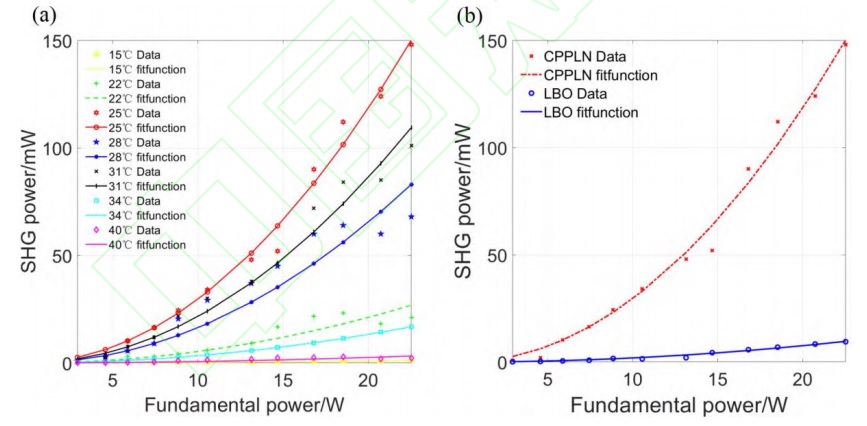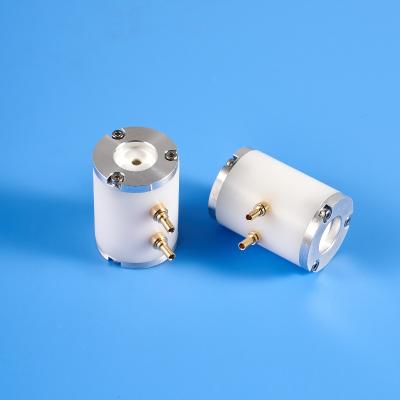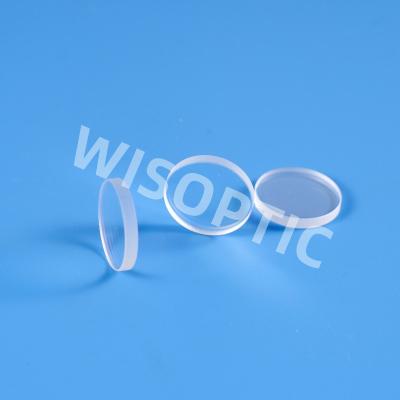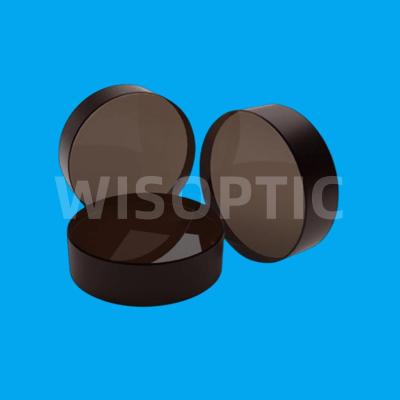Study on the efficiency and temperature robustness of chirped PPLN crystal in 1064nm frequency doubling experiment - 05
4. Experimental Result and Analysis
4.1 Comparison of frequency doubling efficiency of CPPLN and LBO
The CPPLN crystal (www.wisoptic.com) we designed has the maximum frequency doubling efficiency in the working range between 15-40℃, so the subsequent analysis will be carried out around this range. In the same fundamental frequency light power gradient, the effect of temperature change on the frequency doubling efficiency of CPPLN is shown in Figure 4(a). The dots in the figure are the frequency doubling output power under different temperature conditions, and they are fitted, as shown by the solid line in the figure. It can be seen from formula (1) that the power of the frequency doubling light in the experiment should be proportional to the square of the fundamental frequency light power. It can be seen from Figure 4(a) that the data of the frequency doubling light power of CPPLN at different temperatures are consistent with the fitted quadratic term curve. When the temperature is 25℃, the frequency doubling conversion efficiency is the highest. Under the condition of input 1064nm continuous light of 22.53W, 148mW of 532nm light can be obtained, and the frequency doubling conversion efficiency is about 0.66%. The CPPLN frequency doubling efficiency will change when the temperature changes, but the trend of change is not monotonically increasing or decreasing. We will discuss this in detail in Section 4.2.
Although we have compared the efficiency of CPPLN and LBO in theory in Section 2.1, in reality, the CPPLN crystal itself will absorb the 532nm laser, and the domain wall generated by the crystal polarization and the front and back surfaces will partially reflect the 532nm laser. Therefore, the actual double-frequency power and double-frequency efficiency will be reduced compared to the theoretical values. Take the double-frequency efficiency data of CPPLN at 25℃, when the conversion efficiency is the highest, and take the data of LBO crystal (www.wisoptic.com) at 19℃, when its conversion efficiency is also the highest. The results are shown in Figure 4(b). Under all other conditions, the double-frequency efficiency of CPPLN is significantly higher than that of LBO, about 15.58 times that of LBO, which is consistent with the theoretical results.




